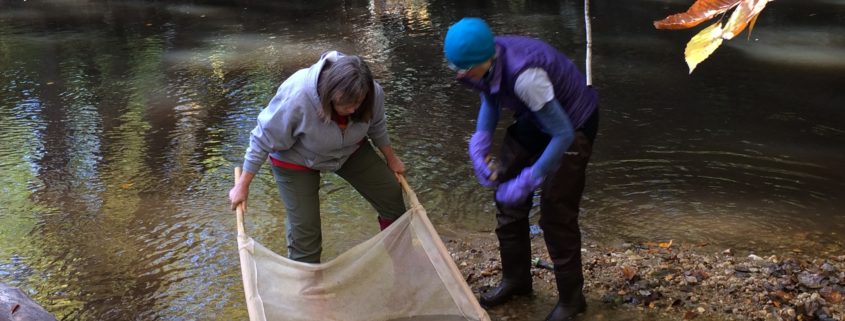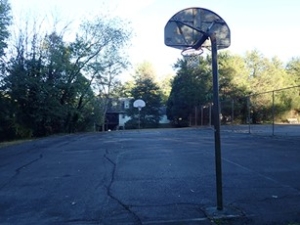Stream Monitoring Citizen Science & Training Opportunities, October and November Dates
Photo by FMN J. Quinn, Stream monitoring at Pohick Creek.
Little Difficult Run Stream Monitoring Field Training
When: Saturday, October 21, 2023
9:00-11:30am
Where: Fred Crabtree Park, Herndon
This beautiful stream site is located a short hike into the woods and has a large diversity of macroinvertebrates. A visit to this site is highly recommended for anyone looking to practice their macroinvertebrate identification skills, for their VASOS certification or for fun! Learn more and register for this workshop and others here.
Sugarland Run Stream Monitoring Workshop
When: Monday, November 6, 2023
2:00-4:30pm
Where: Sugarland Run Stream Valley Park, Herndon
This site is lovely in the fall, and we usually find some fun hellgrammites and crayfish. This site is also close to one of the largest great blue heron breeding and nesting grounds in the region, and we may see some visitors from their northern range in the area. Pretty neat! Learn more and register for this workshop and others here.
Pohick Stream Monitoring Field Training
When: Wednesday, November 8, 2023
2:00-4:30pm
Where: Pohick Creek Stream Valley Park, Springfield
This site has a greater flow and wider stream than any of our other sites. Does more water mean more macros? Only one way to find out… Learn more and register for this workshop and others here.
Big Rocky Run Stream Monitoring Workshop
When: Saturday, November 11, 2023
1:00-3:30pm
Where: Cabell’s Mill, Ellanor C. Lawrence Park, Chantilly
Join us for our last stream monitoring of the fall season! Volunteers at this site often visit and enjoy the park’s nature center and interpretive trails. Learn more and register for this workshop and others here.
More Training and Stream Monitoring Opportunities
- Izaak Walton League (Virginia Save Our Streams) – Stream Monitoring Certification Training
- Creek Critters by Audubon Naturalist Society – macroinvertebrate data collection app
- Salt Watch – monitoring road salt levels in local waterbodies using test strips
- Nitrate Watch – monitoring nitrate levels in local stream using test strips
The NoVa Soil & Water Conservation teams are very excited to contribute their stream data to state and national datasets. If you’d like to see data from all the NVSWCD regional stream monitoring team’s active sites, you can find our organization on the Clean Water Hub.






